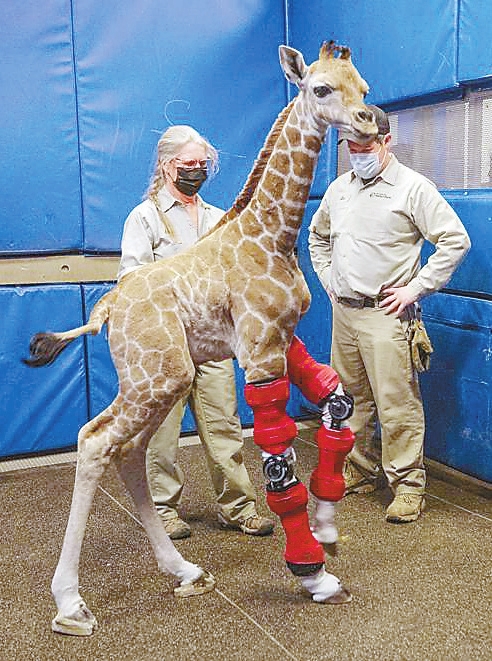
OVER the past three decades, U.S. prosthetics and orthotics specialist Ara Mirzaian has fitted braces for everyone from Paralympians to children with scoliosis. But Msituni was a patient like none other — a newborn giraffe. The calf was born Feb. 1 at the San Diego Zoo Safari Park, with her front limb bending the wrong way. Safari park staff feared she could die if they didn’t immediately correct the condition, which could prevent her from nursing and walking around the habitat. But they had no experience in fitting a baby giraffe in a brace. That proved especially challenging given she was a 1.78-meter-tall newborn and growing taller every day. So, they reached out to experts in orthotics at the Hanger Clinic. “It was pretty surreal when I first heard about it,” said Mirzaian. “All I did was go online and study giraffes until we got out here.” Zoos increasingly are turning to medical professionals who treat people to find solutions for ailing animals. The collaboration has been especially helpful in the field of prosthetics and orthotics. Earlier this year, Zoo Tampa in Florida teamed up with similar experts to successfully replace the beak of a cancer-stricken great hornbill bird with a 3D-printed prosthetic. In 2006, a Hanger team in Florida created a prosthetic for a bottlenose dolphin that had lost its tail after becoming tangled in ropes from a crab trap. Their story inspired the 2011 movie “Dolphin Tale.” But this was a definite learning curve for all. “We commonly put on casts and bandages and stuff. But something that extensive, like this brace that she was provided, that’s something we really had to turn to our human medicine colleagues for,” said Matt Kinney, a senior veterinarian for the San Diego Zoo Wildlife Alliance.(SD-Agencies) | 
